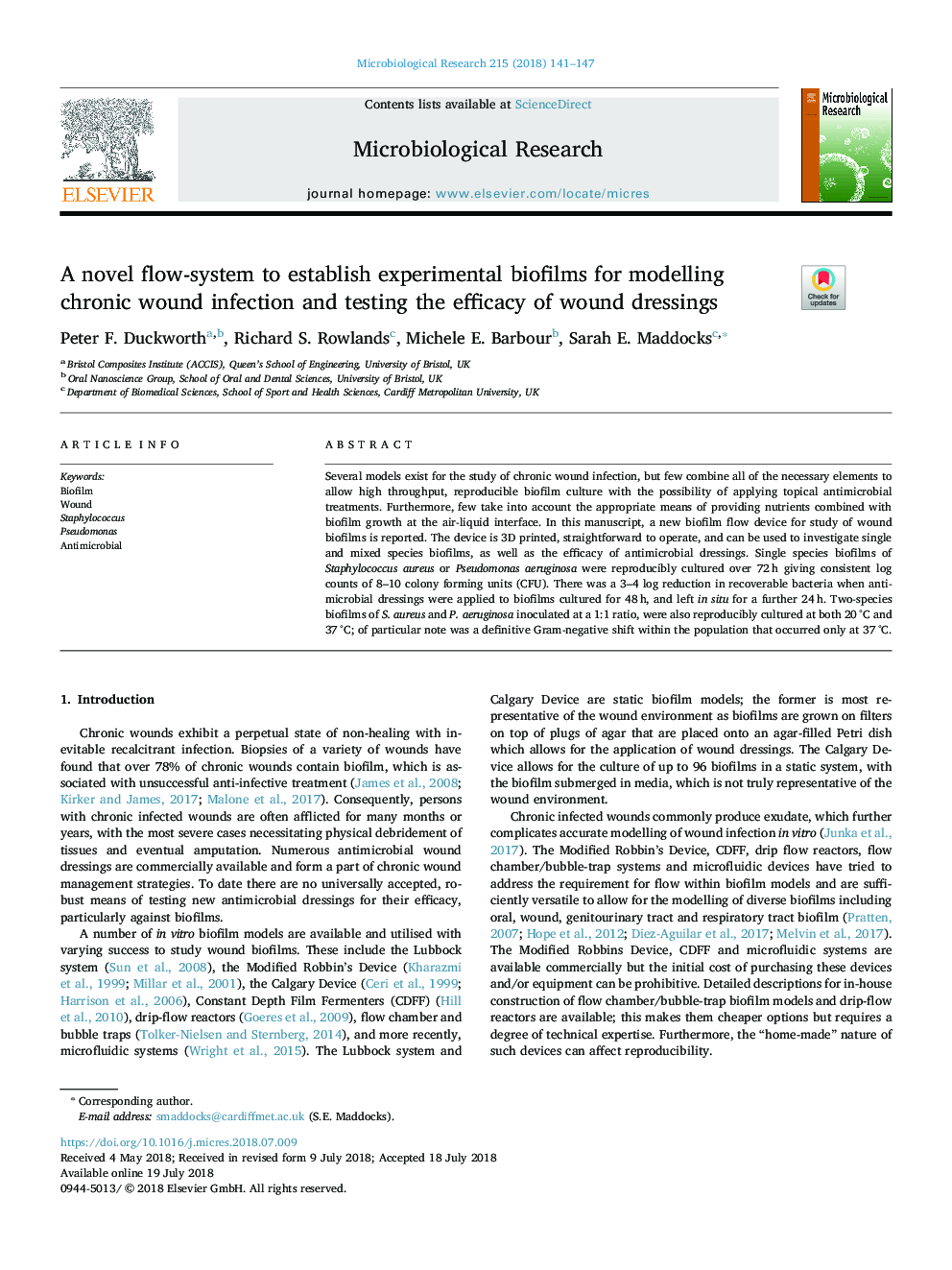| Article ID | Journal | Published Year | Pages | File Type |
|---|---|---|---|---|
| 8422715 | Microbiological Research | 2018 | 7 Pages |
Abstract
Several models exist for the study of chronic wound infection, but few combine all of the necessary elements to allow high throughput, reproducible biofilm culture with the possibility of applying topical antimicrobial treatments. Furthermore, few take into account the appropriate means of providing nutrients combined with biofilm growth at the air-liquid interface. In this manuscript, a new biofilm flow device for study of wound biofilms is reported. The device is 3D printed, straightforward to operate, and can be used to investigate single and mixed species biofilms, as well as the efficacy of antimicrobial dressings. Single species biofilms of Staphylococcus aureus or Pseudomonas aeruginosa were reproducibly cultured over 72â¯h giving consistent log counts of 8-10 colony forming units (CFU). There was a 3-4 log reduction in recoverable bacteria when antimicrobial dressings were applied to biofilms cultured for 48â¯h, and left in situ for a further 24â¯h. Two-species biofilms of S. aureus and P. aeruginosa inoculated at a 1:1 ratio, were also reproducibly cultured at both 20â¯Â°C and 37â¯Â°C; of particular note was a definitive Gram-negative shift within the population that occurred only at 37â¯Â°C.
Related Topics
Life Sciences
Biochemistry, Genetics and Molecular Biology
Biotechnology
Authors
Peter F. Duckworth, Richard S. Rowlands, Michele E. Barbour, Sarah E. Maddocks,
